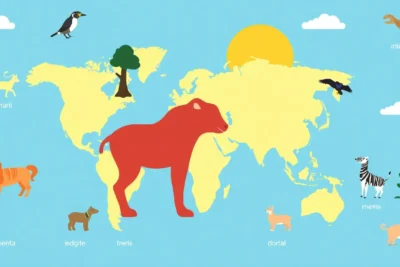
The Labyrinth of the Infinite Mind
hace 1 año · Actualizado hace 1 año
Este test de nivel C1 está diseñado para estudiantes que buscan perfeccionar su comprensión lectora a través de una narrativa envolvente y desafiante. Consta de 25 preguntas que pondrán a prueba tu habilidad para interpretar ideas complejas, analizar a fondo personajes y captar matices esenciales en el texto.
Acceder a más Test de Inglés Gratuitos
Historia
In the heart of the Alpine Research Facility, a secret experiment pushed the boundaries of neuroscience. The Infinite Mind Project aimed to map and replicate human consciousness within a simulated environment. Led by the brilliant but enigmatic Dr. Adrian Vale, the project promised to revolutionize medicine, education, and even the concept of identity itself.
Dr. Lyra Hayes, a cognitive psychologist, was recruited to evaluate the ethical implications of the experiment. When she arrived, she was struck by the scale of the operation. Dozens of servers hummed with data, and holographic interfaces displayed complex neural pathways.
“Impressive, isn’t it?” Dr. Vale said, appearing at her side. He was tall, with piercing eyes that seemed to see through her. “We’ve created a digital labyrinth—a place where consciousness can explore itself without limits.”
Lyra was skeptical. “And what happens when someone gets lost?”
Vale smiled cryptically. “That’s what we’re here to find out.”
The core of the project was an interface called the Nexus Gate, which allowed participants to enter the digital labyrinth. It was a sprawling, ever-changing world where thoughts took form and memories became landscapes. Vale invited Lyra to observe a live trial.
The subject, a volunteer named Sam, sat in the Nexus chair, his head surrounded by electrodes. “Entering the labyrinth,” Vale announced as the system activated. On the monitors, the team watched as Sam’s consciousness materialized in the simulation.
At first, Sam explored with curiosity. He wandered through a field of floating equations, then climbed a staircase that led to a memory of his childhood home. But as the simulation adapted to his thoughts, it began to shift unpredictably. The equations turned into chains, and the staircase crumbled into an abyss.
“Something’s wrong,” Lyra said. “He’s losing control.”
Vale frowned. “The labyrinth is designed to challenge the mind. He’ll adapt.”
But Sam didn’t adapt. He panicked, his vital signs spiking as the simulation trapped him in an endless corridor of distorted memories. Lyra insisted they pull him out, but Vale hesitated. “If we interrupt now, we could damage his neural pathways.”
Ignoring him, Lyra manually shut down the Nexus Gate. Sam regained consciousness but was visibly shaken. “It was like being trapped in my own fears,” he said. “I couldn’t tell what was real.”
Lyra confronted Vale. “This isn’t exploration—it’s torment. You’re pushing people beyond their limits.”
Vale was unapologetic. “The labyrinth reflects the mind. If they fear it, it’s because they fear themselves. Our goal is to help them transcend those fears.”
Determined to expose the project’s dangers, Lyra delved into the system’s data. She discovered that the labyrinth wasn’t just a passive environment—it was learning. With each participant, it grew more complex, feeding on their emotions and memories.
The next day, Vale announced his intention to enter the labyrinth himself. “If I’m asking others to face their minds, I must do the same,” he said.
Despite her objections, Lyra joined the team monitoring his trial. As Vale entered the Nexus Gate, the simulation reacted instantly, creating a labyrinth that mirrored his brilliance and ambition. At first, he navigated it with ease, solving puzzles and uncovering hidden pathways.
But then the labyrinth turned against him. His confidence gave way to doubt as he encountered fragments of his past—mistakes, betrayals, and moments of weakness he had buried. The corridors twisted into a maze of impossible geometry, and his vital signs began to falter.
“Pull him out!” Lyra demanded.
“He’s close to a breakthrough,” a technician argued.
“No,” Lyra said. “He’s trapped.”
Taking matters into her own hands, she entered the Nexus Gate to guide Vale back. The labyrinth greeted her with her own memories, but she pushed through, focusing on finding him. She eventually discovered him in a chamber filled with mirrors, each reflecting a different version of himself.
“Adrian,” she called. “You have to let go.”
“I can’t,” he said, his voice breaking. “The labyrinth knows me too well.”
Lyra reached out her hand. “Then let me help you.”
With her support, Vale faced his reflections, accepting the parts of himself he had long denied. The labyrinth began to stabilize, and they found their way to the exit.
When they emerged, Vale was humbled. “You were right,” he told Lyra. “The labyrinth isn’t just a tool—it’s a mirror. And not everyone is ready to see themselves.”
The project was suspended, and Lyra published a report advocating for the ethical use of consciousness simulations. The Labyrinth of the Infinite Mind became a cautionary tale, a reminder that the greatest frontiers often lie within—and that they must be navigated with care.
Preguntas
Si quieres conocer otros artículos parecidos a The Labyrinth of the Infinite Mind puedes visitar todos nuestros artículos de C1.
Deja una respuesta


Artículos que te pueden interesar